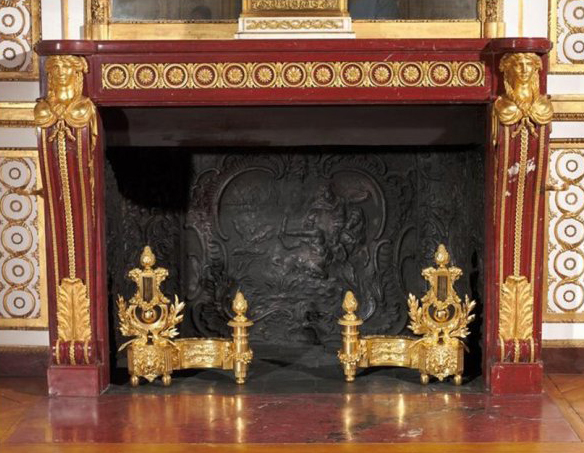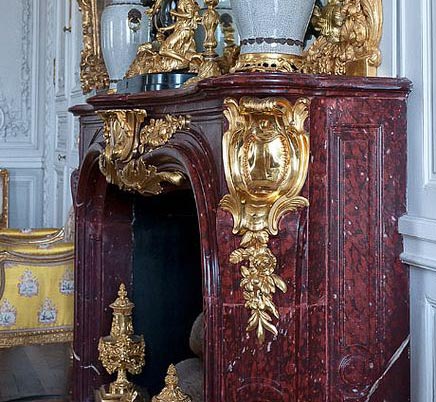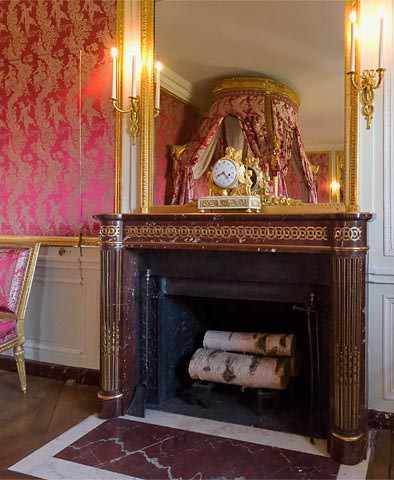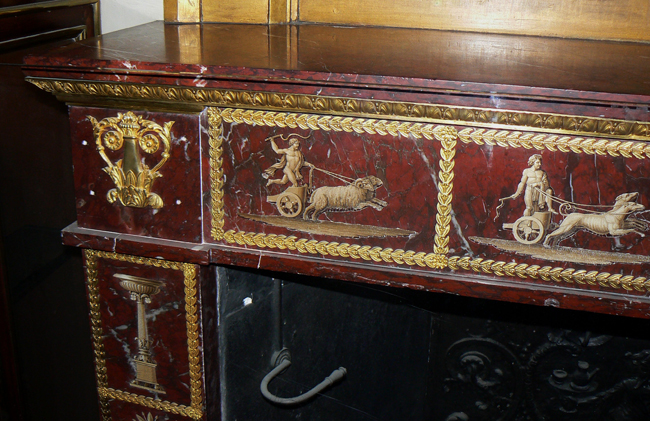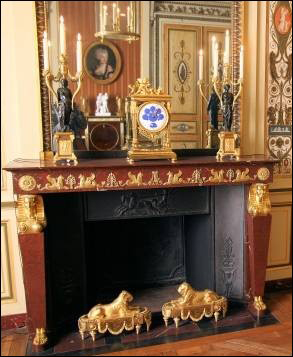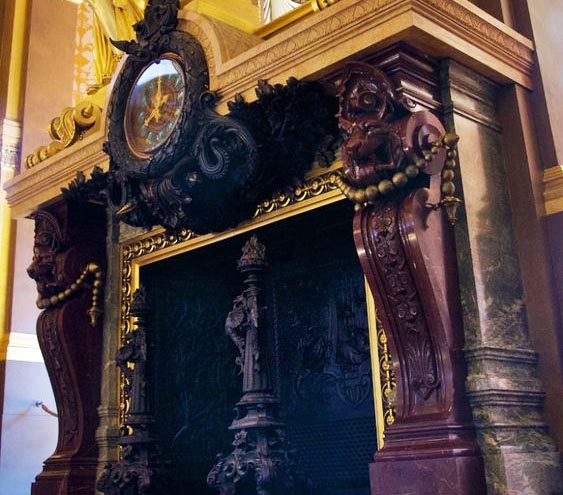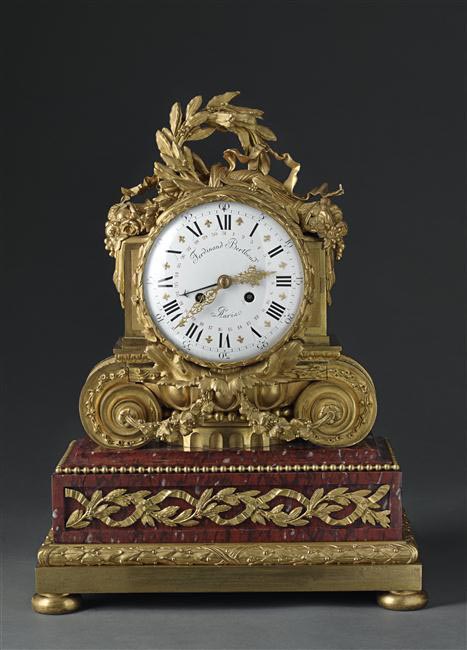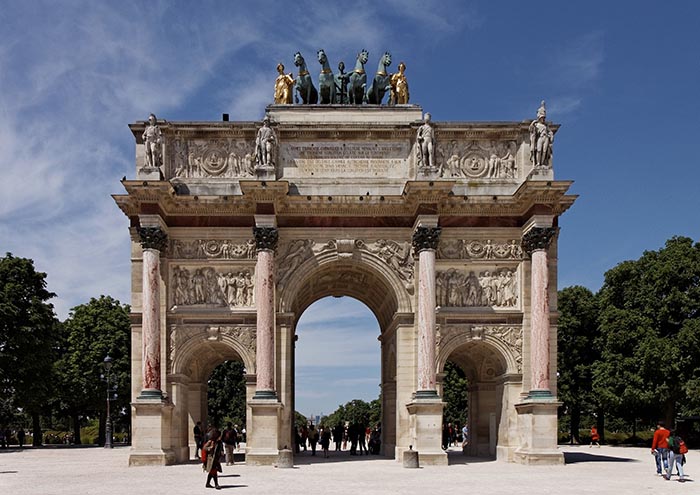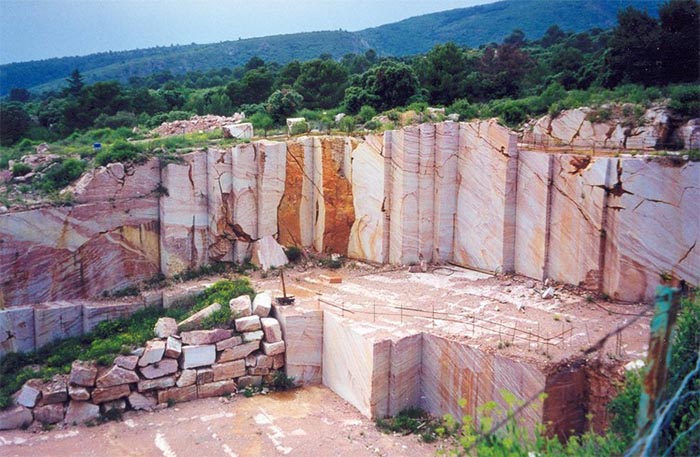Griotte marble
Download PDFThe Red Griotte marble gets its name from the Morello cherry, “griotte” in french, that has an inimitable vivid red color. When the marble contains numerous goniatites (fossilized shells composing the marble) filled with white calcite, it is called “oeil de perdrix” (“partridge eye”).
The Griotte red was one of the preferred marbles for royal apartments in 18th century, to make fireplaces in particular. Louis XIV, very fond of this peculiar red, orders the design of a large amount of fireplaces made out of this marble for the Versailles Palace . With no ornaments, only magnified by the marble’s color, one can there admire the fireplace of Louis XV's Cabinet. The others are generally ornamented with gilt bronze, like those of the Counsel Cabinet, Louis XVI’s Wardrobe Cabinet, the Gilded Study, Madame Victoire’s Apartments, Marie-Antoinette ’s Apartments, etc.
The greatest palaces will also equip themselves with these : the Château de Fontainebleau helds at least too antique fireplaces designed in this marble. The first is in the Counsel Room and the second in the Abdication Room. The Louvre museum and the museum of Decorative Arts in Paris exhibit such fireplaces, perfectly representative of the 17th and 18th century’s tastes.
In 19th century, this marble is still extremely renowned and abundantly used. The Opéra Garnier in Paris, in its breathtaking decoration, equips its Grand Foyer with a monumental fireplace sculpted in this imposing red.
Broadly used for object’s ornament, such as clocks and statuettes, this prestigious red is also destined to the decoration of architectural fronts in addition to other marbles. Palaces, private mansions and churches have used it, like the Hôtel de Cassini (1768), equipped with a dining room which door-tops are made out of Griotte marble. Napoléon Bonaparte orders the realization of the Carrousel Arch of Triumph’s frieze (1809) in a Griotte marble giving it an admirable solemnity.
The main quarries are in the regions of Caunes-Minervois and Félines-Minervois, north-east from Carcassonne. Exploited in the Antiquity, they are rediscovered about 1615 by the Italian sculptors Stefano Sormano and Antoine Lignani, who begin a trade of the several Caunes marbles in exchange of the Carrara white marbles. The famous sculptor Bernini draws the King’s attention on these quarries, who orders Claude-Félix Tarlé to exploit them for the Court, and then decrees them “Royal Quarries” in 1692. Red from the Languedoc and Griotte are the most asked then, coming from the Terrables plateau and from the Boriette, where there is also Turquin . It spreads in this time under the wrong name of “Italy Griotte”.
The Red Griotte marble has also been extracted from other places like Sost, near Mauléon-Barousse, in the quarry of Coumiac in Cessenon-sur-Orb, and in Spain nearby Lezo and Renteria. Broadly exported, the United States have particularly appreciated this noble material’s sophistication.
Bibliography
J. Dubarry de Lasalle, Identifying marbles, Ed. H. Vial, Dourdan, 2000
J. Dubarry de Lasalle, Using marbles, Ed. H. Vial, Dourdan, 2005
P. Julien, Marbres, From Quarries to Palaces, ed. Le Bec en l'air, Manosque, 2006
Marmi antichi, collective work, ed. De Luca, Rome, 1998




